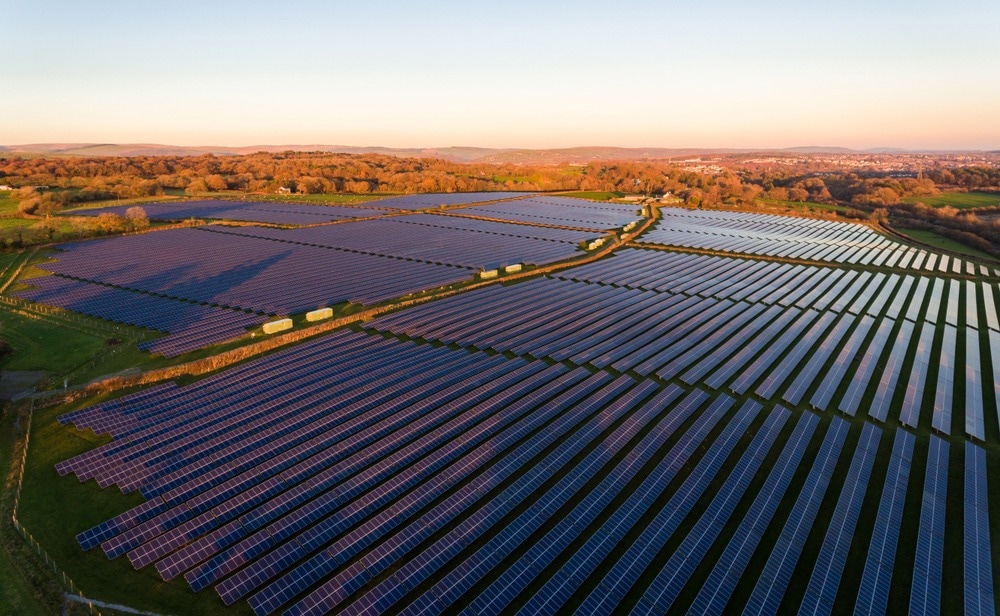There have been increased developments in solar energy technology in recent years. More viable commercial collar energy platforms are becoming available in more areas for a lower price than ever before. The solar power movement is still approaching maturity and promises exciting developments to come.

Image Credit: steved_np3/Shutterstock.com
Solar energy technology has progressed in leaps and bounds in just a few years. Recent advances include:
- Ultra-efficient solar cells
- Solar panels that collect energy at night
- The first commercially available perovskite-based photovoltaics.
This progress is likely to continue in the next few years and has been prompted by increasing awareness of potential environmental collapse, energy insecurity, and rising living costs.
As more experimental solar cells move toward commercialization, and further domestic and industrial consumers make the switch, the industry as a whole will continue to ramp up the pace of progress and contribute significantly to our collective efforts to reduce fossil fuel dependence.
Solar Cell Efficiency
Solar cells – the photovoltaic components in solar panels that convert sunlight into electricity – are becoming more efficient every year. However, scientists continue to research solar cell efficiency to make them capable of producing more electricity in the same conditions as their less efficient counterparts.
A team at the US National Renewable Energy Laboratory (NREL) recently highlighted a record solar cell efficiency of 39.5% under natural light conditions.
The cell’s efficiency and simple design make it particularly well suited for highly area-constrained applications, where a small panel generates a lot of electricity (such as in future aircraft).
It is also applicable in low-radiation space applications, where there is less energy in the sun’s rays than there is on Earth. Here, the cell still achieved a conversion efficiency of 34.2%.
The study, published in 2022 in the journal Joule, demonstrated the record-breaking efficiency with an inverted metamorphic multijunction (IMM) architecture developed by NREL.
The efficiency was achieved after scientists investigated quantum wall solar cells and manipulated multiple 2D layers. Scientists embedded a quantum wall cell into an IMM device with three junctions each tuned for different wavelengths of the solar energy spectrum.
Solar Power At Night
Radiated energy from the sun heats the planet’s crust substantially in the day. However, energy is generally lost to the atmosphere and cold surrounding space.
In new research published in the journal ACS Photonics, a team of photovoltaics engineers at UNSW Sydney, Australia, demonstrated a successful test run of their new device, capable of converting this thermal energy into electricity.
A power generating device called a thermo radiative diode was used, which operates with infrared energy in a similar way to night vision goggles, but scaled up.
Commercially Available Perovskite Solar Cells
Perovskite was first put to use in a solar cell in 2009. The University of Manchester scientists in the UK released details of a new record-breaking perovskite cell in 2016.
Perovskite crystals are approximately one-fifth more efficient than silicon when converting the sun’s energy into electricity. However, the first perovskite-based panels were prohibitively fragile and had a short operable lifetime.
Engineers from Princeton University recently published an article in Science that introduced the first perovskite solar cell with a commercially viable lifetime. This is a significant step toward making perovskite photovoltaics a standard fixture in solar installations across the world.
The engineers believe that the device can work at above standard rates of efficiency for the current solar power industry for at least 30 years. The current batch of commercial solar energy technology only reaches a maximum lifespan of around 20 years.
As well as being highly durable, the perovskite device also meets and exceeds solar panel efficiency standards. Silicon-based solar cells have dominated the solar energy market since they were first introduced in 1954, but the new perovskite cell may mark the end of silicon’s solar supremacy.
Perovskite crystals can be manufactured at room temperatures and with significantly less energy than silicon. This makes them cheaper to produce and more sustainable.
Due to their flexibility – as opposed to silicon’s stiffness and opacity – perovskite crystals can also be used for curved, arced, or domed solar panels.
The Princeton engineers showed how perovskite’s fragility could be overcome with a novel accelerated aging technique that could extend solar cell potential beyond silicon’s limits.
The Future of Solar Cell Technology
Progress in solar cell technology is showing no signs of slowing down. Highly efficient, low cost and easily installable (lightweight, flexible) solar panels may only be a few years away from the market.
References and Further Reading
France, R.M., et al. (2022) Triple-junction solar cells with 39.5% terrestrial and 34.2% space efficiency enabled by thick quantum well superlattices. Joule. doi.org/10.1016/j.joule.2022.04.024.
Neil, M.P. et al. (2022) Thermoradiative Power Conversion from HgCdTe Photodiodes and Their Current-Voltage Characteristics. ACS Photonics. doi.org/10.1021/acsphotonics.2c00223.
Zhao, X., et al. (2022) Accelerated aging of all-inorganic, interface-stabilized perovskite solar cells. Science. doi.org/10.1126/science.abn5679.
Disclaimer: The views expressed here are those of the author expressed in their private capacity and do not necessarily represent the views of AZoM.com Limited T/A AZoNetwork the owner and operator of this website. This disclaimer forms part of the Terms and conditions of use of this website.